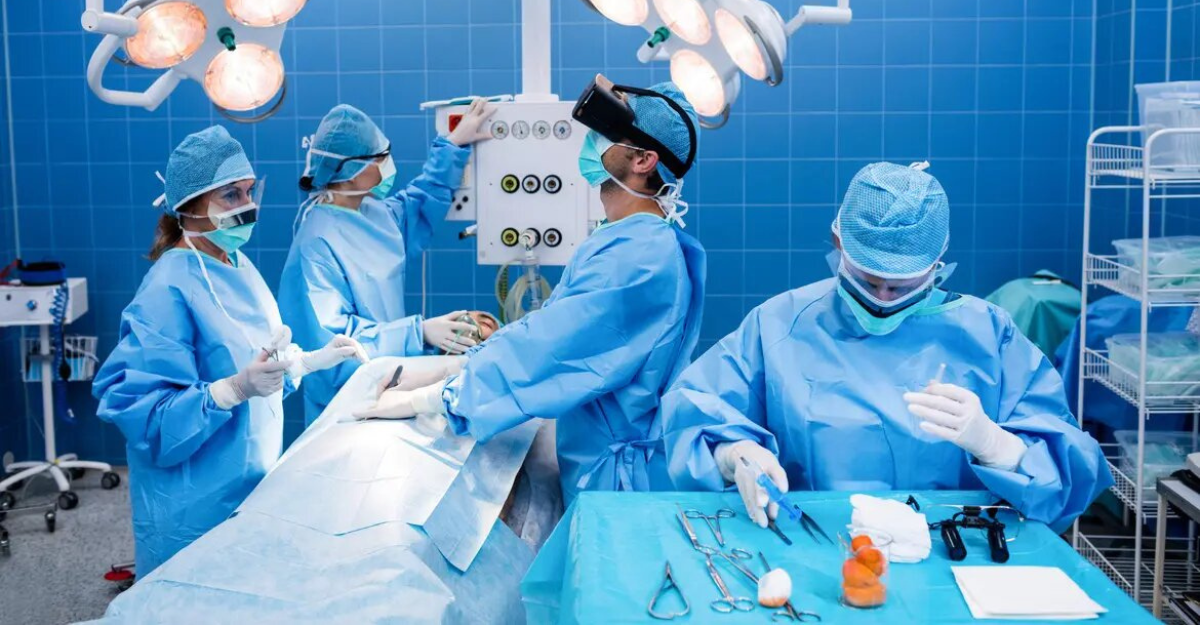Robotic technology has revolutionized various surgical fields in the ever-changing landscape of medical technology. Particularly in the realm of colorectal cancer, a significant global health concern, remarkable advancements in treatment methodologies have emerged.
Robotic-assisted surgery has emerged as a prominent technique due to its remarkable precision, minimal invasiveness, and positive impact on patient outcomes. This advanced approach has revolutionized the field, offering improved surgical outcomes while minimizing the invasiveness of procedures. This blog delves into the crucial role that robotics plays in the treatment of colorectal cancer, shedding light on its numerous advantages and remarkable advancements.
Understanding Colorectal Cancer
To fully grasp the significance of robotics in the field, it is essential to first understand the nature of colorectal cancer. Colorectal cancer encompasses malignancies that originate in the colon or rectum, making it one of the most prevalent forms of cancer worldwide.
For years, traditional treatment methods like open surgery, chemotherapy, and radiation have been the cornerstone of colorectal cancer management. However, the emergence of robotics has revolutionized the approach to tackling this disease, adding a whole new dimension to its management.
Evolution of Robotic-Assisted Surgery
Robotic-assisted surgery signifies a revolutionary departure from conventional techniques. The advent of robotics in the early 2000s marked a pivotal milestone in the field of surgical technology. This advanced system empowers surgeons to execute intricate procedures with heightened dexterity and precision, all while utilizing minimally invasive incisions. In the treatment of colorectal cancer, the robot acts as a seamless extension of the surgeon's hands, providing unmatched precision and enhanced visibility.
Benefits of Robotic-Assisted Colorectal Surgery
Minimally Invasive Approach
One of the key benefits of robotic-assisted surgery lies in its minimally invasive approach. Unlike traditional open surgeries that necessitate large incisions, robotic procedures involve small, precise cuts. This not only reduces postoperative pain but also speeds up recovery and minimizes scarring.
Enhanced Precision
The robotic system offers surgeons a comprehensive, high-definition 3D view of the surgical site, accompanied by magnified visuals. This heightened visibility enables precise maneuvering in intricate areas, minimizing the potential harm to surrounding tissues and organs.
Quicker Recovery Time
Robotic-assisted colorectal surgery offers patients a speedier recovery in comparison to traditional methods. The decreased impact on the body and utilization of smaller incisions result in reduced postoperative pain, shorter hospital stays, and a faster return to regular activities.
Specific Applications in Colorectal Cancer Surgery
Rectal Cancer Resection
Robotic-assisted surgery has demonstrated remarkable success in the removal of rectal tumors. The system's flexibility enables surgeons to navigate the limited space of the pelvis more easily, facilitating accurate excision of cancerous tissue while preserving surrounding structures. This advanced technology enhances surgical precision and improves patient outcomes.
Colonic Resections
Robotic technology has greatly enhanced procedures that involve removing segments of the colon. With the help of the system's articulating instruments, surgeons can perform intricate maneuvers, leading to optimal outcomes in colonic resections for colorectal cancer. This innovative approach ensures precision and efficiency in surgical interventions, elevating the overall quality of patient care.
Transanal Minimally Invasive Surgery (TAMIS)
Robotic technology has revolutionized the approach to early-stage rectal cancer. Through TAMIS, surgeons utilize the robot's articulating instruments to access and remove tumors through the anus, minimizing the impact on surrounding tissues and preserving sphincter function.
Sphincter-Sparing Surgery
Maintaining quality of life is of utmost importance in colorectal cancer surgery. Robotic systems play a pivotal role in enabling sphincter-sparing procedures, which help patients preserve bowel control without the necessity of a permanent colostomy bag following surgery. This remarkable advancement has greatly enhanced the postoperative experience for numerous patients.
Total Mesorectal Excision (TME)
Robotics assists surgeons in achieving Transanal Total Mesorectal Excision (TME) with unparalleled accuracy. By reducing the potential risk of residual cancerous tissue and enhancing overall oncological outcomes, this advanced technology revolutionizes the field of rectal cancer surgery.
Overcoming Challenges in Colorectal Surgery
Performing colorectal surgery presents distinctive challenges due to the intricate nature of the involved anatomy. However, these challenges can be effectively addressed by leveraging the advanced technology of robotics.
Difficult Anatomy
The pelvis, where numerous colorectal surgeries take place, has a complex anatomy. Robotic-assisted surgery provides improved visualization and manipulation in tight spaces, overcoming challenges associated with traditional laparoscopic techniques.
Precise Anastomosis
Achieving a precise anastomosis, which involves reconnecting healthy tissue after tumor removal, requires utmost precision. The robotic system's articulating instruments empower surgeons to suture with enhanced accuracy, effectively reducing the likelihood of complications such as leaks or strictures.
Future Trends and Innovations
With the continuous advancement of technology, the realm of robotic-assisted colorectal surgery unveils a realm of thrilling possibilities. The integration of artificial intelligence and machine learning paves the way for the emergence of more intuitive robotic systems, bringing us closer to a future of enhanced surgical precision and efficiency. Furthermore, the progress in haptic feedback technology has the potential to greatly augment the surgeon's tactile perception during robotic procedures, effectively closing the divide between human and machine interaction.
Patient Perspectives and Experiences
In addition to the technical components, it is vital to comprehend the profound influence that robotic-assisted surgery has on patients. Robotic procedures have garnered praise from numerous patients, who often report higher satisfaction rates attributed to reduced pain, accelerated recovery, and enhanced cosmetic outcomes. Testimonials frequently emphasize the positive impact of robotics on the overall treatment experience, highlighting its remarkable influence.
Conclusion
In the realm of colorectal cancer treatment, robotics has emerged as a game-changer. The integration of robotic-assisted surgery has revolutionized traditional approaches, offering patients and surgeons a more advanced and effective option. With benefits ranging from minimal invasiveness to enhanced precision, robotic technology continues to shape the landscape of colorectal cancer surgery.
As we look to the future, ongoing research, technological innovations, and increased surgeon proficiency are set to further amplify the positive impact of robotics in the fight against colorectal cancer.

